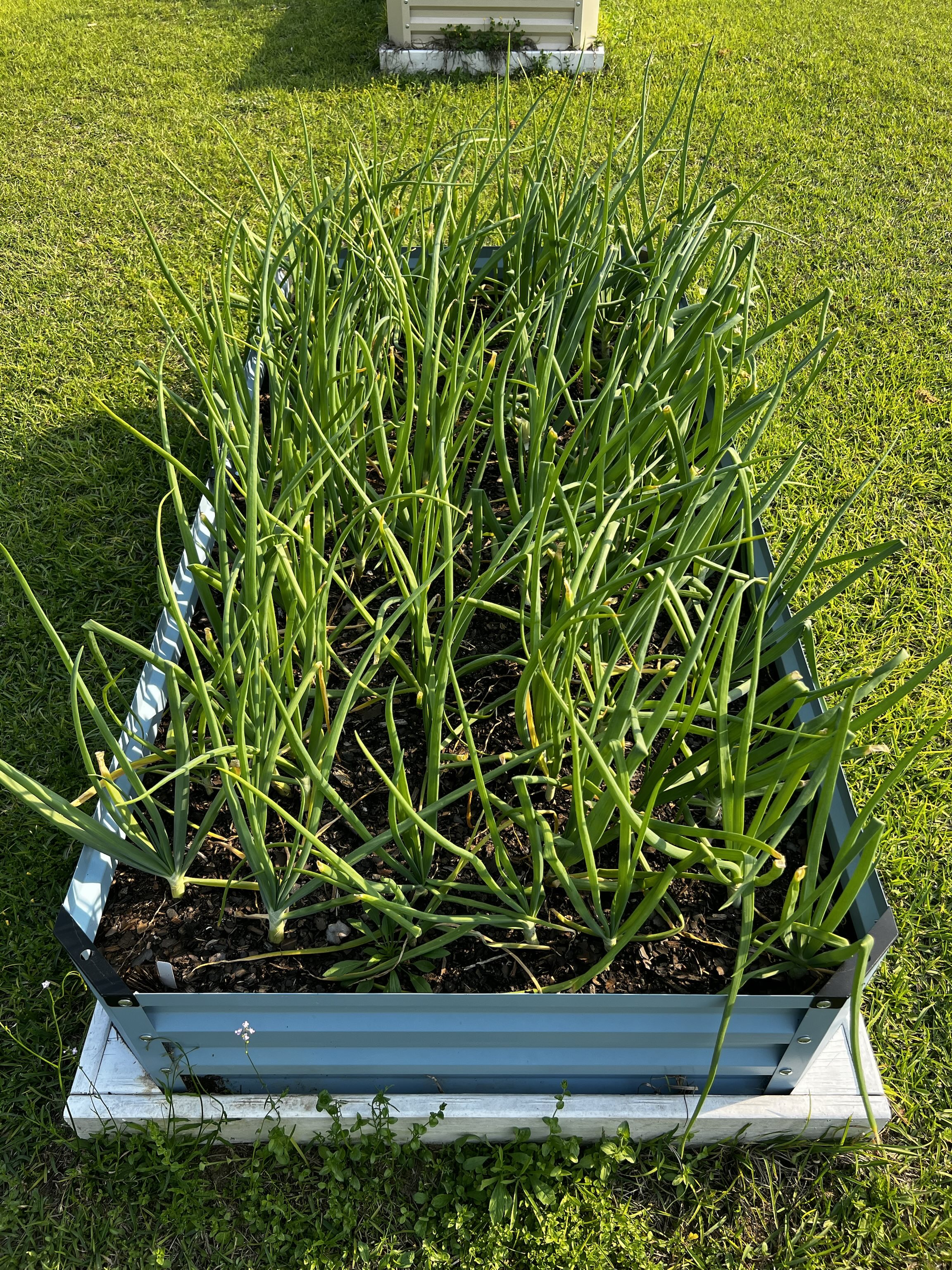These Onions Are Going to Make Me Cry!
Back in December, we planted around 150 onion plants. We've never grown onions before, and from what we’ve heard, they can be a bit fussy here in North Florida. But hey — we like a good challenge, and nothing beats the taste of homegrown onions pulled fresh from the soil.
Choosing the Right Onions for North Florida
When it comes to growing onions, not all varieties are created equal — especially when it comes to day length. Onions form bulbs in response to the number of daylight hours they receive. There are short-day, intermediate-day, and long-day onions:
- Short-day onions need about 10–12 hours of daylight to start bulbing, which makes them perfect for the Southern states — like here in North Florida.
- Intermediate-day onions are better suited for the central U.S.
- Long-day onions need 14–16 hours and thrive up North.
We went with a mix of white, purple, and yellow onions from the sweet onion capital of the Southeast — Vidalia, Georgia. These are known for their mild, sweet flavor and juicy crunch. That sweetness, though, comes largely from their famously low-sulfur soil. Our soil is a bit different (definitely not low-sulfur), but we’re hoping for the best — maybe we’ll get a Monticello Mild out of the deal!
They Were Growing So Well... Until They Weren’t
Everything was going great. The plants were strong and tall — some of them pushing two feet high! I had read that trimming the tops can actually benefit the plant: it improves airflow, lets in more light, and helps reduce the top-heaviness that can lead to broken necks (once an onion’s neck breaks, that bulb’s done growing). But... life got busy, and I hadn’t trimmed them in a while. The other morning, I walked out to check on them — and my heart sank a little.
Rust Never Sleeps (Especially in a Humid Garden)
I noticed clusters of small yellow-orange spots on the leaves — classic signs of onion rust. Onion rust is a fungal disease caused by Puccinia allii. It thrives in warm, humid environments — which pretty much describes our North Florida springs to a tee. The spores spread by wind or splashing water and settle on the leaves. Once it's in, it drains the plant’s energy, reduces bulb development, and if left unchecked, can wipe out your crop.
Prevention Tips:
- Good spacing and airflow — don’t overcrowd!
- Regular trimming — keep those tops in check.
- Avoid overhead watering — water at the base instead.
- Rotate crops — don’t grow onions in the same spot year after year.
I went through and cut off every infected leaf, trimmed all the plants back neatly, and gave them a good spray with Azoxystrobin, a fungicide that’s effective against rust and other leaf diseases. Fingers crossed — everything is already looking a little better, and we’ll be keeping a close eye on them.
Gardening always keeps us humble. One day you’re proud of your lush onion patch, and the next day it’s a fungal crime scene. But that’s how it goes — we’re learning as we grow. Stay tuned for an update in a few weeks. Hopefully we’ll be slicing into some sweet homegrown onions this summer — and not crying for the wrong reasons.
